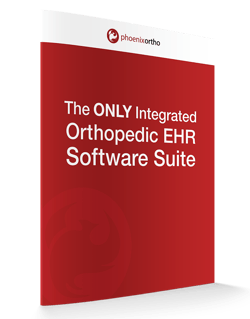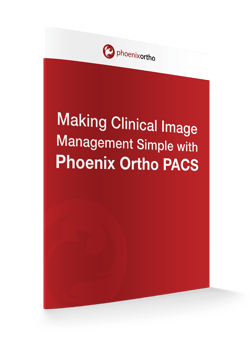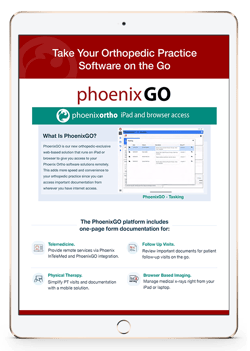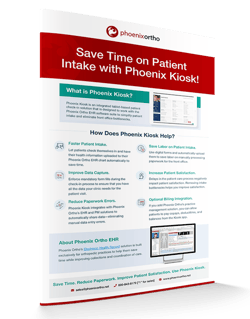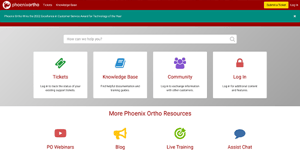Electronic Health Record (EHR) systems are a key tool for orthopedic clinics across the country. They can help doctors keep track of important patient records, organize records for billing purposes, and even order patient images. A well-made orthopedic Electronic Health Record system saves time, reduces frustration, and helps doctors reclaim their day.
However, before a clinic can make use of their EHR, there’s a need to ensure a smooth EHR implementation process. In previous years, this usually involved an EHR vendor sending training resources to the clinic. After the COVID-19 outbreak, this changed to a more virtual process with remote support services.
Why are things shifting more towards virtual implementation for EHRs? What is EHR implementation in the first place? How will implementation services evolve in the years to come?
What Is EHR Implementation?
EHR implementation is a service provided by EHR vendors to help their customers put their new software or platform to practical use. Sometimes called software or EHR onboarding.
EHR implementation services vary from one vendor to the next. For example, some EHR vendors simply send their customers a software download or cloud solution login URL and call it a day—leaving the clinic to puzzle out how to use the software on their own.
Meanwhile, other vendors have complete onboarding strategies—providing service and support to their customer that includes things like:
- A Dedicated Customer Success Team. A support team that helps by providing start-to-finish management of the onboarding/implementation process. This team can provide troubleshooting support, advice for using the software, and other support services.
- EHR Training. A service where the support team guides clinic staff through the EHR software so they can be more comfortable in its use. One of the goals of training is to create “super users” who can train others in the EHR systems’ use and serve as in-house authorities on the software.
- Post Implementation Support. Even after the initial implementation process is complete, clinics may need some additional support to get the most out of their new software. So, post-implementation support with ongoing training, troubleshooting, and periodic “EHR use health checkups” can be helpful.
Traditionally, these services would be provided on a mostly “onsite” model—meaning the EHR vendor would drive or fly out a service tech or team to the clinic implementing their software. However, after the coronavirus pandemic of 2020, this quickly stopped being the norm.
How COVID-19 Triggered Remote, Virtual EHR Implementation
While EHR vendors were already using remote, virtual EHR implementation services well before the pandemic, COVID-19 accelerated the adoption of virtual implementation.
As noted by EHR Intelligence:
“While the industry was working tirelessly to quell the impacts of COVID-19, most innovative initiatives were placed on hold or canceled completely. But, at several organizations, leaders made the difficult decision to continue plans for an EHR implementation. Many believed the benefits of integration would help their organization’s overall COVID-19 response.”
Technology plays a key role in many healthcare practices—helping clinics save time and any additional implementation travel costs. This is especially important for orthopedic practices where individual doctors may see dozens of patients before lunch when other medical specialists might only see a dozen patients in a whole day.
However, onsite implementations weren’t a practical reality during the coronavirus outbreak. Because of asymptomatic carriers of COVID, face-to-face meetings increased the risk of spreading the disease—a risk that both EHR vendors and clinics wouldn’t want to take!
The Shift to a Remote, Virtual Visit Model
On top of pursuing new EHR software, many clinics started to change over to a virtual visit-based model to help protect their patients. Telemedicine solutions enabled orthopedic doctors to remotely diagnose patients while saving even more time—but not every telemedicine solution smoothly integrated with existing EHR systems.
Some EHR vendors partnered with telemedicine solutions to create a more integrated software platform that would help doctors further relieve post-op pressures, save time, and improve clinic cash flow.
What Virtual EHR Implementation Means for Orthopedics
What does virtual EHR implementation mean for orthopedic practices, specifically? There are a variety of potential implications that the switch to virtual EHR implementations could have for orthopedic practices:
- Reduced EHR Implementation Costs. The switch from in-person to virtual implementation services could help reduce the cost of implementation—largely because it eliminates the need to account for travel time and costs.
- Faster EHR Implementations. By removing the need to account for travel time in an EHR implementation team’s schedule, vendors can speed up the implementation process—moving from one clinic to the next faster.
- Heavier Focus on Remote-, Web-, and Phone-Based Support. With the EHR vendor working remotely, there could be a much heavier focus on web- and phone-based support. Rather than having an onsite implementation expert walk the clinic’s staff through the software, they may use virtual training sessions or encourage customers to check out online training videos and FAQ pages—or even make a call to a support line/schedule Zoom meetings with support staff. By setting up a virtual link supported by an experienced EHR Software team, anyone can log in, ask their question, see a live preview of the workflow and return to their patient or task with the immediate answer.
These are just a few of the potential impacts—both for good and for ill—that a switch to a purely virtual EHR implementation process could bring. The actual impacts may vary by vendor and by the specific situation of the clinic implementing the EHR solution.
Are Hybrid Implementations the Future of EHR?
Not every EHR implementation will have to be virtual—even after the pandemic. There are EHR vendors that employ a “hybrid” implementation model that combines both onsite services with remote support. This can give clinics the best of both worlds.
As noted by EHR Intelligence, “vendor travel costs take up a large chunk of your budget. By limiting the travel and holding some of these events virtually, those costs can become significant.” Hybrid models allow vendors to send a smaller team—or even just single implementation experts—saving clinics money on travel costs while still providing quality implementation and troubleshooting support.
It’s important to note that hybrid implementations are a new process that may need some kinks worked out. For example, EHR Intelligence’s article quoted Farid Faruqui, the interim chief information officer for Huron Regional Hospital, as saying that “you’ve got to be able to operate under these odd scenarios. You may have people that get technical issues, hearing the occasional barking dog or crying baby, you’ve got to kind of take that in stride.”
These implementations that combine a small onsite staff with a centralized implementation team could be the future of EHR implementations.
For vendors, they allow the vendor to conduct more implementations in a shorter time frame—while still providing better support than simply giving the clinic staff a download code for the software.
For clinics, hybrid implementations can provide significant cost savings compared to paying for a whole team to be flown to their location. This is in addition to the benefits of having someone onsite to help with training and troubleshooting tasks.
Regardless of the implementation method, orthopedic clinics still need to have the right EHR. Phoenix Ortho’s exclusive focus on orthopedics ensures that our EHR is the best solution for saving time while improving the clinic’s ability to track important patient data and collect from paying organizations (such as HMOs and insurers).
Unlike some other EHR vendors, Phoenix Ortho never used the phrase “postpone” during the pandemic. Our team went full steam ahead and worked on processes that would help orthopedic clinics achieve even greater success in the future—despite the challenges of the pandemic!
We are proud of our implementation team and their successes during 2020. We look forward to providing even more orthopedic-exclusive service, support, and EHR development to meet the needs of orthopedic surgeons and administrators in the years to come!
Want to help more patients while saving enormous hours per day on paperwork? Reach out to the Phoenix Ortho team to get started!
Schedule a 1:1
Get in touch with Phoenix Ortho to learn more about how you can save time, money, and mouse clicks with an orthopedic-specific EHR.





